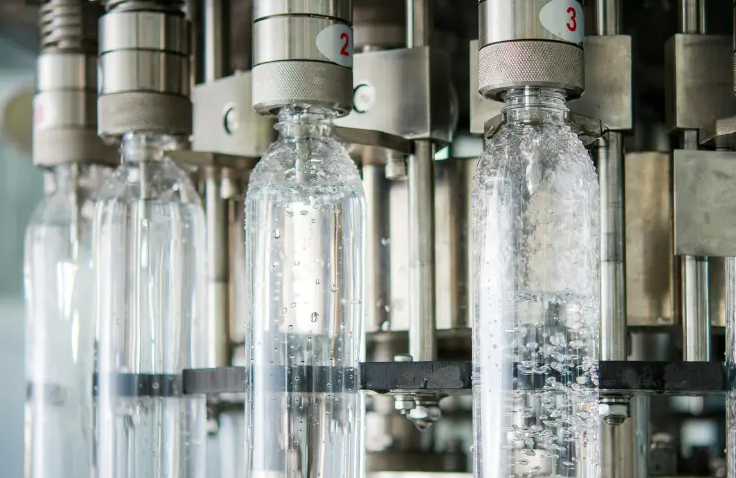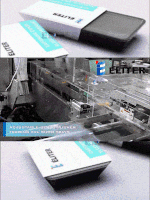Liquid filling: innovation in processes, size and versatility
2023-02-06
Companies have been dedicated during the last years to generate developments that reduce costs and waste while increasing the speed of production.
Filling a container with a liquid is a multi-stage process: the orientation, the cleaning of the container, the filling itself, the inspection, the capping, the labeling, and (optionally) the placement of a heat-shrinkable band. At these stages, there may not be great innovation processes at all.
The filling sector has concentrated during the last decades on two key issues to innovate: the first by making these processes faster, more efficient and simpler; and the second by improving the capacity of machines to offer more performance, in monobloc systems of smaller size but with more versatility.

Innovation in filling processes
According to Jairo Martínez, a business development specialist for Latin America at Capmatic, not all processes can be innovated. In some, such as orientation and filling, the industry has been developing important initiatives; while in the case of cleaning, capping, labeling and strip laying, although the processes are still very standardized, some novel ideas can be seen.
Capmatic is responsible for producing machines for packaging solutions and according to Martínez, for example, in recent years they have been working on automatic orientation technologies. “Innovation is directly linked to the ability not to use additional formats. Our guidance counselor is basically capable of working with any shape of container, whether it has a circular, rectangular or square base,” he says. This is something that gives versatility to the machine when working with the packaging, which allows greater adaptation to changes within production.
On the other hand, in the case of filling, the expert points out, there is much more breadth in terms of what has been happening over the past few years. “In our case we can talk about microperistaltic filling. We developed the peristaltic filling technology, it is our own brand, but we are already working at the moment on a monobloc system that already comes incorporated with micro peristaltic system. Although a traditional peristaltic pump is capable of handling milliliters and even microliters, there are already beginning to be restrictions. The innovation in this sense is that the prismatic pump for the micro is for microliters from extremely small doses and with high precision,” emphasizes the expert.
As for the remaining processes, Martínez highlights, although it is true that many of them are already very standardized and increasing the level of innovation becomes a complex issue, the truth is that small developments have also allowed to improve efficiencies.
For example, in the case of cleaning, although the concept is essentially the same always: air is injected into the container so that the dust particles inside the container are detached from the walls while suction is done, we can talk about innovation in cases that in addition to cleaning, rotation in smaller spaces is included.
That’s something that they have done at Capmatic with a team that does is that at the same time that it cleans, it also rotates the containers, a function that it incorporates occupying less space than that traditionally occupied by a rotary-based cleaner. “The innovation occurs because the rotation of the containers is achieved in a static way. The two containers do not have to rotate, so it is an innovation in that I can be achieving the same as a rotary cleaner, but the space is much smaller,” says the expert.
On the other hand, in the case of the insertion of a cap or an eyedropper, although it is also a very standardized process, the truth is that in recent years manufacturers have focused on improving the insertion speed. While in the case of labeling machines, although the dynamics are the same, what has improved is the handling capacity of the container to place the label anywhere and in a simple way.
“We can talk about labeling machines that can place a wraparound label, that can place a label front back, that can place a label on the lid, that can place a label under. The innovation in our case is to have a team that is versatile and capable of placing any of these within the same platform,” says Martínez.
In that sense, the expert concludes, another key issue that is being increasingly seen is the improvement of all these processes through more compact monobloc systems with greater versatility. “For example, a traditional monoblock system is capable of orienting a container, it is capable of filling, it is capable of putting a lid on, it is capable of labeling, what we are working on is that the system can also not only work with high viscosity and low viscosity liquids, but also be capable of handling other products, for example tablets, cutting, counting them, for example, dosing powder. That is what is being sought. Versatility towards that we are going”” emphasizes the expert.
Versatility in smaller spaces
A similar opinion to Martinez has the company Valmatic. Consulted by The Packaging, the Italian company that designs and manufactures thermoforming lines for single-dose containers as well as single-dose containers already transformed for different industries, highlights that in recent years it has been working mainly on versatility, energy saving and control in the generation of loss.
“Our machines are compact and highly productive. This peculiarity that characterizes us means that the machines can be located in limited spaces, saving energy. An operator only has the ability to follow the entire production”” the company highlights.
For them, a key issue is that no product is lost in the filling process, much more in high-demand scenarios not only in costs but also in environmental policies and the use of raw materials such as those currently experienced by the world.
“With the rise in raw material costs, especially caused by the pandemic, the controlled dosage of the product and minimal waste help business performance. The Valmatic models have a very precise volumetric dosing system and the pump heads are managed by brushless motors directly controlled by the operator panel. This leads to almost non-existent discarding and to a precisely controlled dosage during processing, also with high speeds,” they emphasize.
In that sense, what they have focused most on has been the development of fast, efficient, waste-controlled and, above all, compact machines. The installation capacity and the reduced use of technical operating personnel have been, according to Valmatic, the key to achieving innovations such as a 30% increase in production speeds.
Little value to innovation in the region
All these innovations, which essentially translate into lower costs, higher production speed, fewer technical operators, reduced operating spaces and in general future production savings are, however, little valued in the Latin American market, according to some experts.
The costs of new technologies have led to the perception that the acquisition by local companies translates into debts with no return when, in reality, it is a savings opportunity if you think with a vision for the future, highlights Leidy Monje, commercial manager of Asemaq, a company that sells these machines in Colombia.
“It’s not that the market doesn’t invest, it does, but you can count the companies that make such investments looking for a guarantee of quality of the final product,” highlights Monje.
For her, companies continue to make short-term profitability analyses, without analyzing the possibility of having versatile and innovative equipment to expand the business capacity. “If you do a profitability analysis or an investment recovery analysis, you will surely recover it very quickly. But companies still believe that if $1 million is invested today they will go bankrupt. And no. It turns out that that million dollars if they see it in time with people, the decrease in costs in spaces and times, and what they invest in labor, could be recovered very quickly,” the expert concludes.




